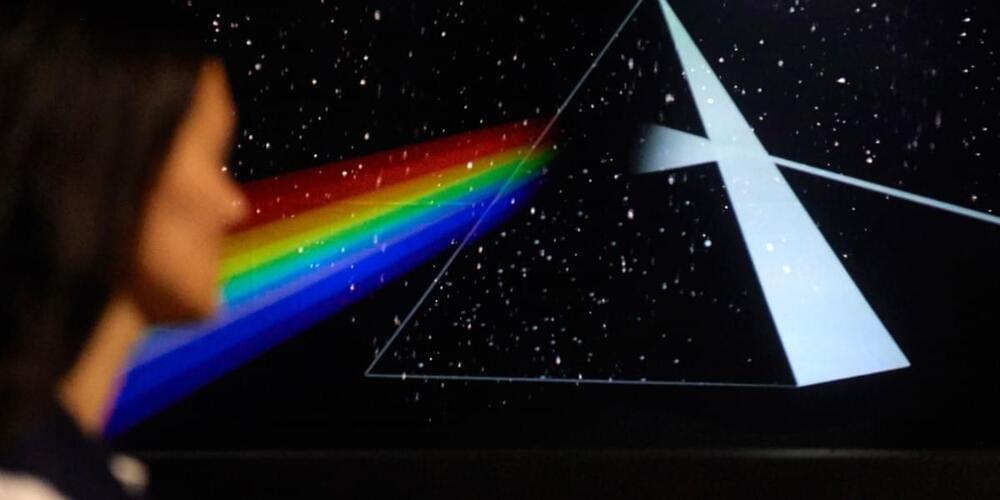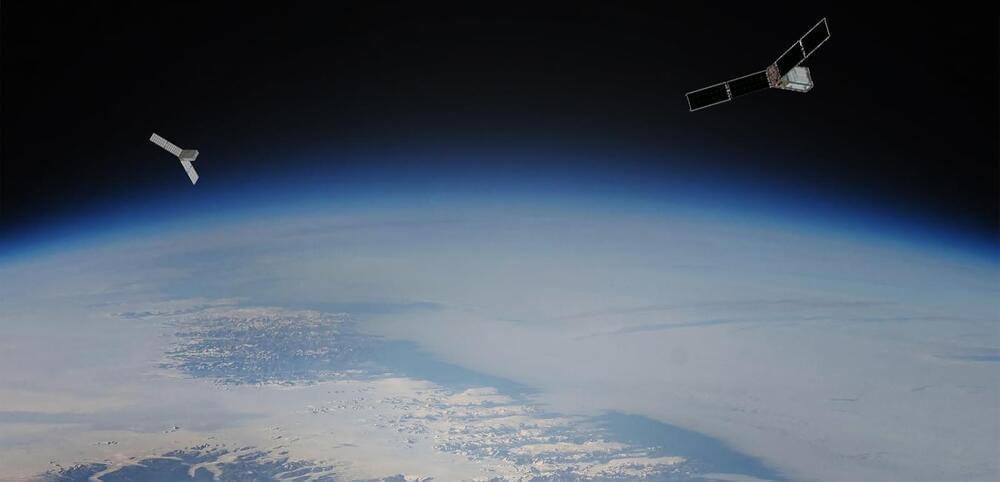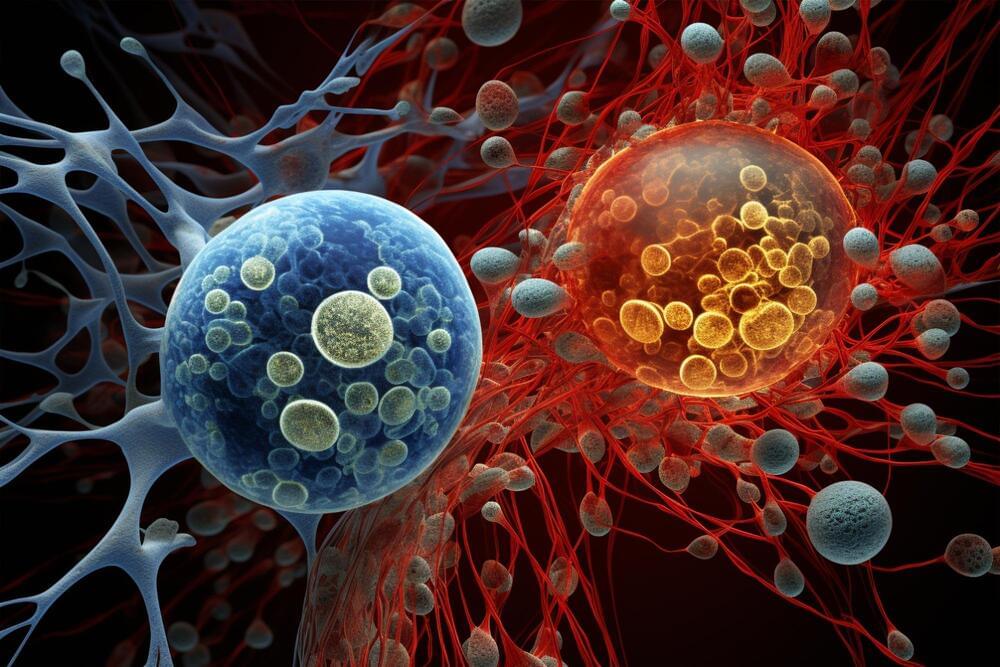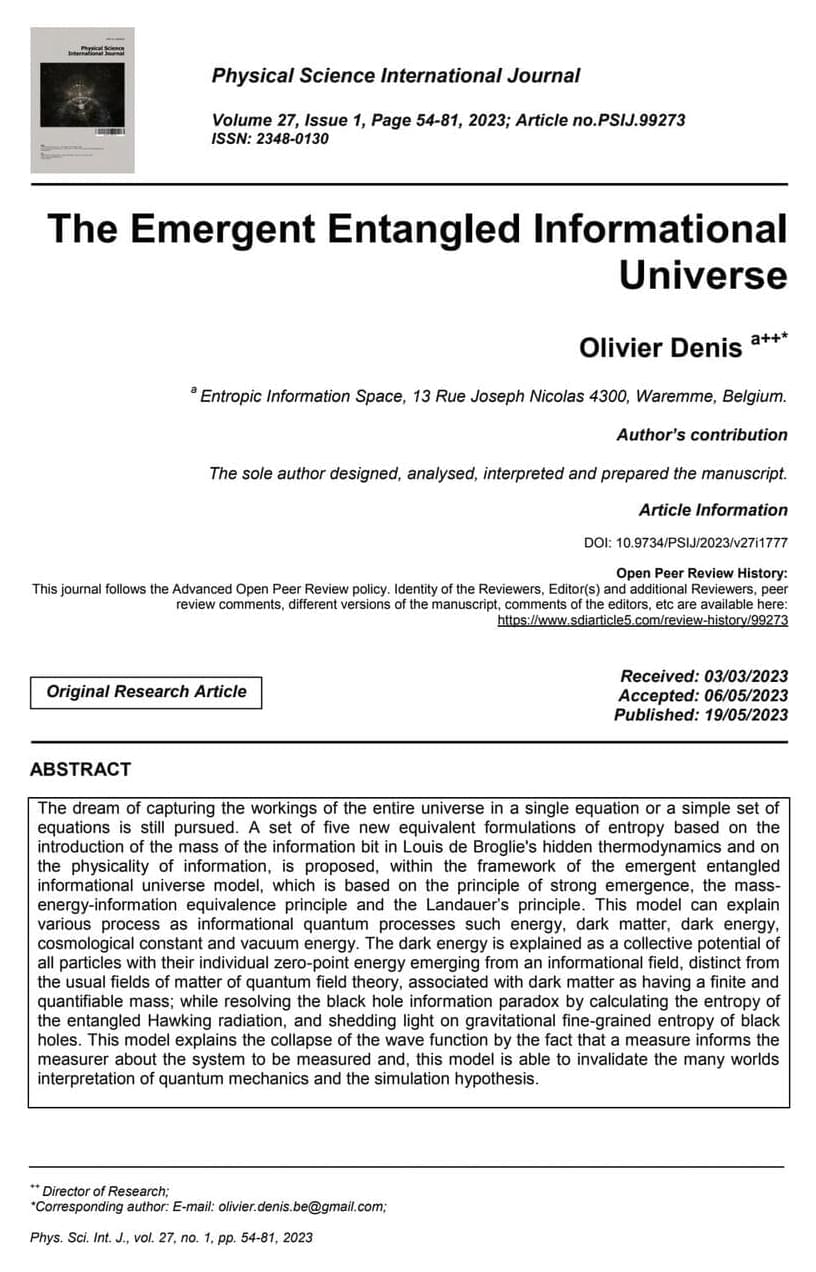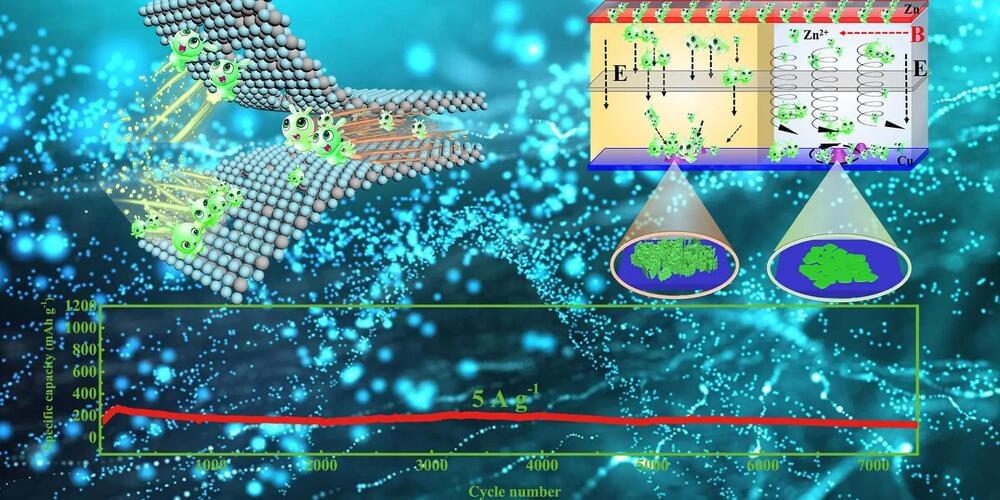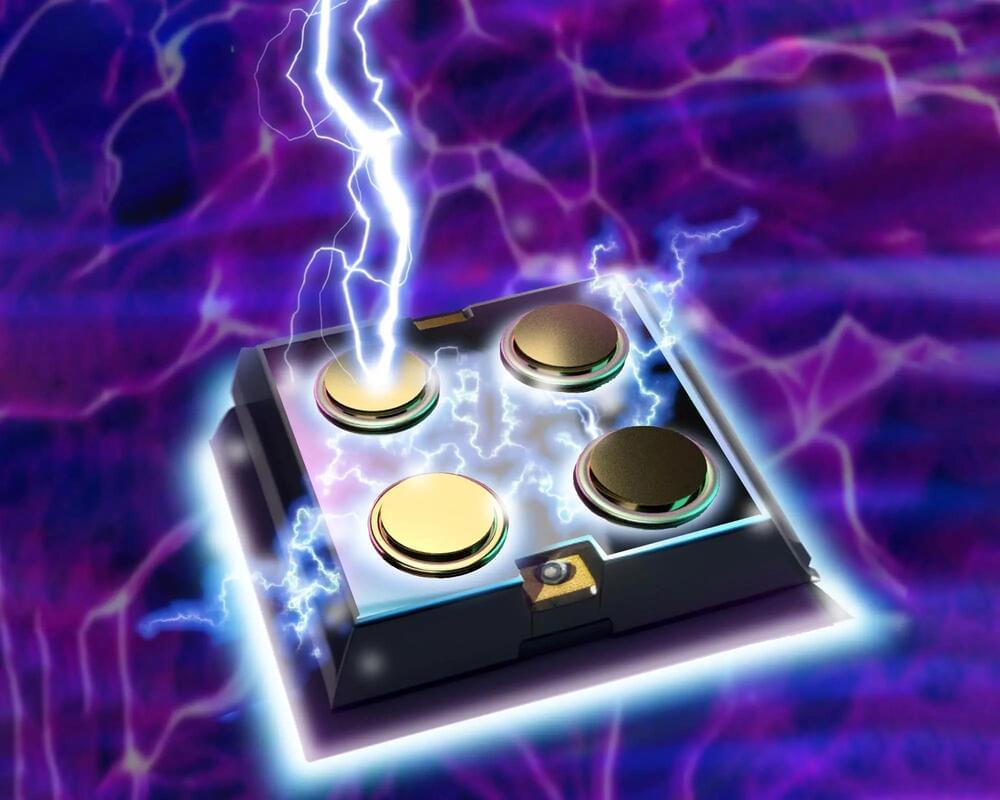Page 1623
Aug 16, 2023
Rocket Lab to launch pair of NASA Earth science cubesats
Posted by Genevieve Klien in categories: energy, satellites, science
WASHINGTON — NASA selected Rocket Lab to launch a pair of cubesats in 2024 to monitor energy entering and exiting the polar regions of the planet.
NASA announced Aug. 14 it awarded a task order through its Venture-class Acquisition of Dedicated and Rideshare (VADR) contract to Rocket Lab for the launch of two 6U cubesats for the Polar Radiant Energy in the Far-InfraRed Experiment, or PREFIRE mission.
The NASA announcement did not disclose the value of the task order. The agency stated in past awards done under VADR that the pricing is considered “proprietary” because the awards are competed in a closed environment, with only companies on the VADR contract eligible to bid on launches of taxpayer-funded missions.
Aug 16, 2023
Talking in Waves: The Unique Communication Language of Cells
Posted by Genevieve Klien in categories: biotech/medical, computing
The physics of cell communication: ISTA scientists successfully model cell dynamics.
Like us, cells communicate. Well, in their own special way. Using waves as their common language, cells tell one another where and when to move. They talk, they share information, and they work together – much like the interdisciplinary team of researchers from the Institute of Science and Technology Austria (ISTA) and the National University of Singapore (NUS). They conducted research on how cells communicate – and how that matters to future projects, e.g. application to wound healing.
Biology may evoke images of animals, plants, or even theoretical computer models. The last association might not immediately come to mind, yet it is crucial in biological research. Complex biological phenomena, even the minutest details, can be understood through precise calculations. ISTA Professor Edouard Hannezo utilizes these calculations to comprehend physical principles in biological systems. His team’s recent work provides new insights into how cells move and communicate within living tissue.
Aug 16, 2023
Math Proof Draws New Boundaries Around Black Hole Formation
Posted by Genevieve Klien in categories: cosmology, mathematics
For a half century, mathematicians have tried to define the exact circumstances under which a black hole is destined to exist. A new proof shows how a cube can help answer the question.
Aug 16, 2023
The humanoid robot that can pilot an airplane better than a human
Posted by Kelvin Dafiaghor in categories: employment, robotics/AI, transportation
The robot’s memory is so large that it can memorise all Jeppesen navigation charts, a task that is impossible for human pilots.
Both artificial intelligence (AI) and robotics have made significant strides in recent years, meaning most human jobs could soon be overtaken by technology — on the ground and even in the skies above us.
A team of engineers and researchers from the Korea Advanced Institute of Science & Technology (KAIST) is currently developing a humanoid robot that can fly aircraft without needing to modify the cockpit.
Aug 16, 2023
Chinese Scientists Develop a High-Performance Ultralong-Life Aqueous Zinc-Ion Battery
Posted by Paul Battista in categories: innovation, materials
A research team has developed an advanced aqueous zinc-ion battery with an enhanced cycle lifespan using a weak magnetic field and a new VS2 material. The breakthrough addresses the challenges of zinc dendrite growth and cathode material limitations. Credit: Mao Yunjie.
A research team at the Hefei Institutes of Physical Science (HFIPS) of Chinese Academy of Sciences (CAS), led by Prof. Zhao Bangchuan, developed a high-performance aqueous zinc-ion battery with ultralong cycle lifespan in a weak magnetic field.
The findings were recently published in the journal Materials Horizons.
Aug 16, 2023
Mimicking the Mind: Quantum Material Exhibits Brain-Like “Non-Local” Behavior
Posted by Paul Battista in categories: information science, mathematics, quantum physics, robotics/AI
UC San Diego’s Q-MEEN-C is developing brain-like computers through mimicking neurons and synapses in quantum materials. Recent discoveries in non-local interactions represent a critical step towards more efficient AI hardware that could revolutionize artificial intelligence technology.
We often believe that computers are more efficient than humans. After all, computers can solve complex math equations in an instant and recall names that we might forget. However, human brains can process intricate layers of information rapidly, accurately, and with almost no energy input. Recognizing a face after seeing it only once or distinguishing a mountain from an ocean are examples of such tasks. These seemingly simple human functions require considerable processing and energy from computers, and even then, the results may vary in accuracy.
How close the measured value conforms to the correct value.
Aug 16, 2023
Why downsizing large language models is the future of generative AI
Posted by Kelvin Dafiaghor in categories: business, economics, robotics/AI
Smaller language models can be based on a billion parameters or less—still pretty large, but much smaller than foundational LLMs like ChatGPT and Bard. They are pre-trained to understand vocabulary and human speech, so the incremental cost to customize them using corporate and industry-specific data is vastly lower. There are several options for these pre-trained LLMs that can be customized internally, including AI21 and Reka, as well as open source LLMs like Alpaca and Vicuna.
Smaller language models aren’t just more cost-efficient, they’re often far more accurate, because instead of training them on all publicly available data—the good and the bad—they are trained and optimized on carefully vetted data that addresses the exact use cases a business cares about.
That doesn’t mean they’re limited to internal corporate data. Smaller language models can incorporate third-party data about the economy, commodities pricing, the weather, or whatever data sets are needed, and combine them with their proprietary data sets. These data sources are widely available from data service providers who ensure the information is current, accurate, and clean.
Aug 16, 2023
Transparent Holographic video glass wall by Glimm
Posted by Jose Ruben Rodriguez Fuentes in categories: augmented reality, computing, holograms
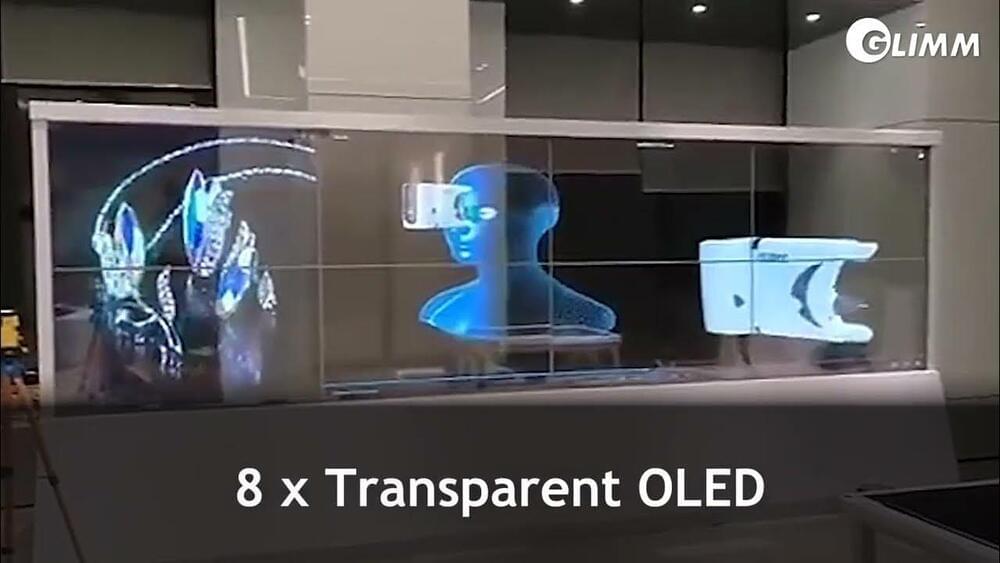
Transparent Holographic video glass wall with 4k resolution.
Glimm has made for one of her clients a transparent video wall called as well holographic video wall indoor with holographic content and video s for indoor location.
The video wall exist of 8 panels of 55 inch TOLED displays which we have combined all together and hide the transformers and graphic cards in a small aluminium frame.
The resolution is 4K and the display is of glass in the glass.
Technology explaining :
TOLED stands for Transparent Organic Light-Emitting Diode. It is a display technology that combines the benefits of both OLED (Organic Light-Emitting Diode) and transparent displays.
In TOLED, each pixel of the display consists of a thin layer of organic materials that emit light when an electric current passes through them. These organic materials are sandwiched between transparent electrodes, typically made of indium tin oxide (ITO), which allow light to pass through.
One of the key advantages of TOLED is its transparency. When the display is not actively emitting light, it appears transparent, allowing users to see through it. This property makes TOLED suitable for applications where transparency is desired, such as in heads-up displays, smart windows, or augmented reality devices or in retail designs, advertisement or create a large TOLED video wall or Hologram 2D 3D.
TOLED also offers the benefits of OLED technology, including high contrast ratios, wide viewing angles, and fast response times. The organic materials used in TOLED displays can emit light directly, eliminating the need for a separate back lighting system, which contributes to their thin and lightweight design.
Besides the Transparent OLED technology we produce as well Transparent LED displays or Transparent LCD displays.
How to combine TOLED displays together?
1. Ensure compatibility: Make sure the Transparent OLED displays you are using are compatible with each other in terms of resolution, interface, and electrical requirements.
2. Physical alignment: Align the displays physically to create a larger display area. This typically involves arranging the displays side by side or in a grid formation. Use appropriate mounting brackets or frames to secure them in place.
3. Connection: Connect the displays together using the necessary cables or connectors. The specific connection method depends on the interface supported by the TOLED displays. Common interfaces include HDMI, Display Port, or other proprietary interfaces.
4. Synchronization: If required, synchronize the displays to ensure coordinated content across all the panels. This may involve configuring the displays through software or hardware synchronization methods. Consult the manufacturer’s instructions or documentation for guidance on synchronization options.
5. Display control: Depending on the setup and software capabilities, you may need to adjust display settings, such as resolution, refresh rate, or color calibration, to optimize the combined TOLED display.
6. Content management: Use appropriate software or programming techniques to distribute and display content across the combined TOLED displays. This could involve treating them as a single large display or as individual screens, depending on your requirements.
By following these steps, you can effectively combine multiple TOLED displays to create a larger and visually cohesive display area.
Continue reading “Transparent Holographic video glass wall by Glimm” »
